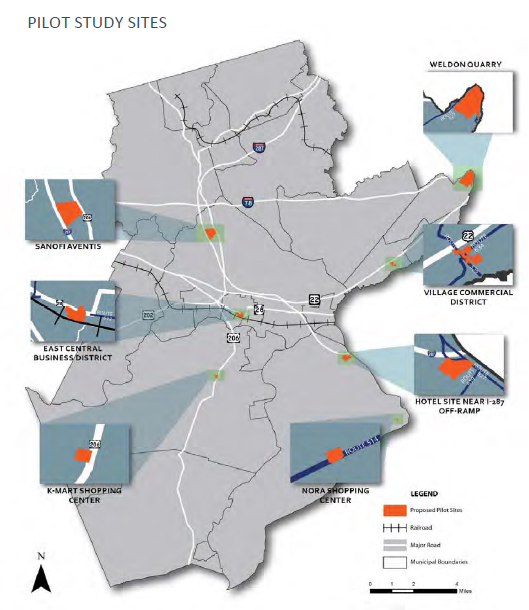New Jersey Future Blog
State Plan offers Clear Path for PATCO Rail Line Extension
March 18th, 2009 by Jay Corbalis
- The Delaware River Port Authority (DRPA) is considering three possible alignments for the proposed extension of its PATCO rail line in southern New Jersey.
- The DRPA, a bi-state agency similar to the Port Authority of New York and New Jersey, held a series of public information sessions about the proposal in early 2008 and has since been studying each of the alignments internally. It is scheduled to select an alignment soon.
- One of the alignments, which would run through the downtowns of several historic Gloucester County towns, has been endorsed by the State Planning Commission as the option most consistent with the State Development and Redevelopment Plan.
Proposed Alignments Pit Sprawl vs. Smart Growth
Gloucester County, sandwiched between Camden and Salem counties in southern New Jersey, has been developing rapidly. Between 2000 and 2007, it was the fastest-growing county in New Jersey, increasing its population by 11.8 percent (compared to the statewide rate of 3.2 percent). Not surprisingly, traffic congestion is worsening in this area, which was once characterized by farm fields and country roads. The problem is particularly acute during rush hour on two major state highways, Routes 42 and 55. The county has limited public transportation; the nearest rail transit option is the PATCO high-speed line, which was constructed in 1969 and runs between Philadelphia and Lindenwold in Camden County.
To help improve the situation, the DRPA has proposed to extend the PATCO line into Gloucester County. NJ TRANSIT offered a similar proposal more than a decade ago, but failed to generate much support. (NJ TRANSIT subsequently turned its attention northward, and built the Trenton-to-Camden RiverLine instead.) This time around, there appears to be greater interest in extending rail service to Gloucester County. The question now is not whether to extend the PATCO line, but how and where.
Of the three alignments under consideration, two would run down the medians of major highways. The first would follow Route 42 and the Atlantic City Expressway to Williamstown. The second would follow Route 55 to Glassboro. The third would run along an existing rail line, through several established downtowns, to Glassboro. (Technically, there are two variations of this alignment; one would employ light rail technology similar to the RiverLine, allowing it to have more stops, while the other would employ a more traditional, heavier rail design.)
While the two highway alignments might appear on the surface to be the most straightforward approach to relieving traffic congestion, research suggests otherwise. Professor John Hasse at Rowan University has found that a small — and shrinking — percentage of Gloucester County residents work in Philadelphia, the ultimate destination of the proposed extension. More than half of Gloucester County’s workforce commutes to destinations within the county. The two highway alignments bypass the major employment centers and would therefore offer no benefit to these intra-county commuters. By contrast, the alignment linking downtowns would run within walking distance of several of the county’s largest employers, including Rowan University and Underwood Hospital.
In addition to relieving traffic congestion, the PATCO extension will almost certainly have an impact on land-use patterns — an important consideration in a region that is projected to remain among the fastest-growing in the state for years to come. The State Planning Commission’s analysis found that the alignments along the highway medians would encourage low-density sprawl in environmentally sensitive areas, while the alignment following the existing rail line would promote the revitalization of the county’s historic centers by encouraging walkable, mixed-use development around the stations.
From any perspective, the DRPA’s decision will have a profound and long-lasting impact on a state that is seeking in the coming decades to accommodate new residents while preserving open space and reducing greenhouse gas emissions. Of the three proposed alignments, only one — the route of the existing rail line, through established downtowns — will help New Jersey achieve these goals, while providing new transportation options to South Jersey residents.
If you have any questions about this issue of Future Facts, please contact Jay Corbalis, Policy Analyst.
















